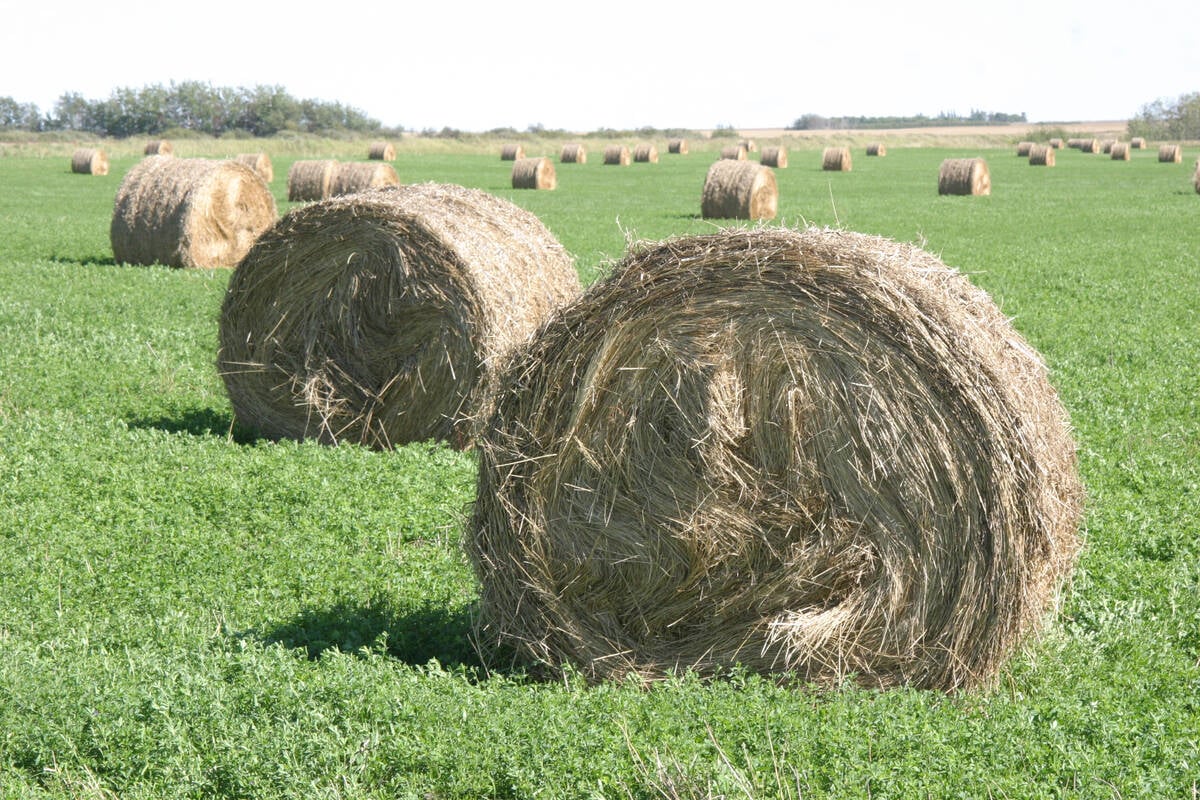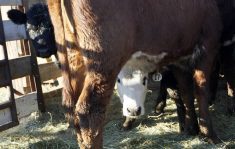ROCKY MOUNTAIN HOUSE, Alta. – Bale grazing at Grant Lastiwka’s ranch is a labour saving practice that shaves his cost of production.
“The bale grazing idea is simply to try to get costs a down a little and gets us more flexibility,” said Lastiwka, who also works as a pasture specialist with the Western Beef Forage Group at Lacombe.
“To place these bales in the field it was roughly, last year, around $2 per bale. This year it will be about $5 a ton or $2.50 per bale roughly,” he said from figures on his own farm. This is cheaper than delivering feed to cows.
Read Also

Breaking down successful winter feeding into six steps
It’s that time of year when it is important to start planning for a cow herd’s winter feeding program. Here are six steps I think are necessary to consider when getting your feed tested.
Adding thatch and nutrients back into the soil to nourish hayfields is another advantage to placing bales strategically in the field.
“From a systems approach, we are trying to feed the soil and feed the plants so they can feed the cows next time. We are putting all the manure and urine back here so it is going to be growing grass for you next year,” he said at a cattle producers’ workshop near Rocky Mountain House.
Bales can be strategically placed in the field and custom haulers do not usually charge more for taking bales to a yard or into the feeding area.
Some people prefer to use round bale feeders to control waste. These are rolled down the field and tipped over the bale.
Feed waste may also be reduced using electric fences so cattle graze in a row and finish what is offered.
If bales are tied with plastic twine they should be set on the butt side for round bales or edge for square bales so the twines do not freeze to the ground. This makes removal easier. If bales are tied with sisal twine the twines do not have to be removed.
The next calculation is quantity of feed. Lastiwka suggested providing three days worth of feed to ensure all receive enough to eat.
“Even if you sorted herds, you still have dominance of cows and aggressiveness of cows in there. So by giving them three days worth everybody gets a fair chance at it,” he said.
On his operation, straw and hay are offered separately. He feeds the cows three days on the hay and moves them to straw for four days. If the cows are thinner or the weather gets cold, they get more hay.
There is concern hayfields may not properly grow back because of heavy thatch and cows trampling the soil. Icing or muddy conditions may also damage alfalfa crowns and soil structure so animal movement should be restricted at times.
Bunch grasses like Russian wild rye, timothy, meadow brome and orchardgrass do not do well under this system if there is 20 percent litter left. Alfalfa has varying results.
Smooth brome and quackgrass return vigorously the following year.
Bale grazing is not a new idea.
Farmers used to leave haystacks in the field and turn the cows out later. Threshing machines could blow straw and chaff stacks onto the harvested grain field providing another source of winter feed.















